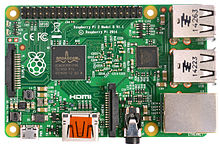Where markets fail, commons based solutions like DIT networking fill the gap. Market-based telecommunication-infrastructures often neglect high-quality internet connectivity for people in need (f.i. refugees), in rural or remote areas or simply for those who cannot afford.
These [DIT] networks have an important role to play as a counter to the few corporations that dominate the internet, and also as a way to raise awareness of the challenges of privacy, net neutrality, censorship, surveillance and manipulation. (Panos Antioniadis)
DIT networking = Do-It-Together-networking is sometimes called DIY networking, a slightly misleading term. DIT networking is our umbrella term for different types of grassroots infrastructures, such as mesh networks, personal networks or community netoworks.
Mesh networks allow wifi routers to provide signals to wifi-enabled devices and the
routers have the ability to connect to and talk to each other. By ‘meshing’ them, or connecting them together, you are creating a larger wifi zone. (Antioniadis 2016)
# Personal networks...
occupy.here, the PirateBox, Polylogu
# Community networks...
# Features of DIT-networks
- provide internet-connection AND a wide variety of web services - require physical proximity for accessing the services - allow anyone to host DIT-networks on a private web server -> web-applications are “self-hosted” (see Wordpress, Owncloud and Etherpad) - enable user's access through the router’s wireless antenna announcing a network name (= Service Set IDentifier (SSID) -> picture the way you connect to a free or home wifi at a hotel or an airport - allow for distributing access points if several antenna exist in the coverage area. This is how ...

Logo of Rasperry Foundation source ![]()
Each router then becomes a “node” in a small network: anyone who connects to one of them can access the services offered by, and people connected to, the other as well. As more nodes get connected, larger areas are covered, and a community can be formed, initially by the owners of the nodes and eventually by everyone in the area.

Raspery Pi 2 Model B source ![]()
- individual contributions to DIT-network tend to be cheap (f.i. individuals can build a single network node using cheap hardware such as a Raspberry Pi or self-host software for installing local applications)
# List of inspiring projects for democratizing the internet
# Sources
Panayotis Antoniadis: DIY networking: the path to a more democratic internet, in The Conversation Nov. 8, 2016 html ![]()
POST http://image-transporter.apps.allmende.io/image
# Personal networks...